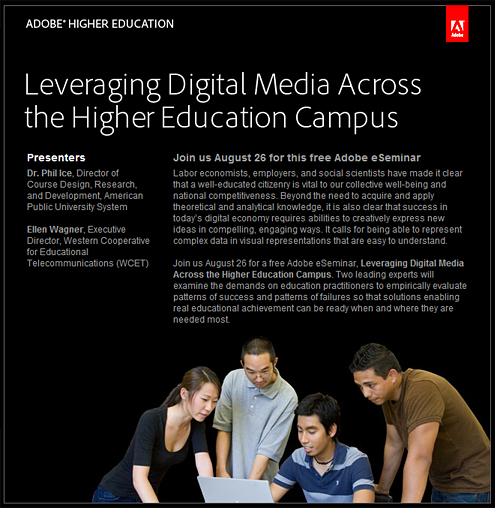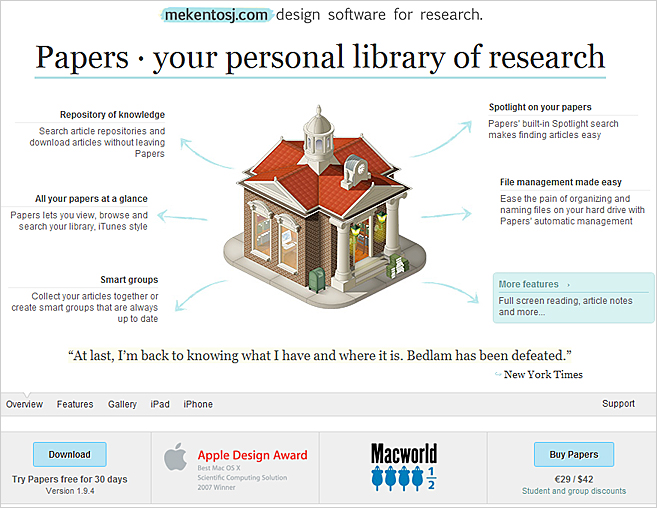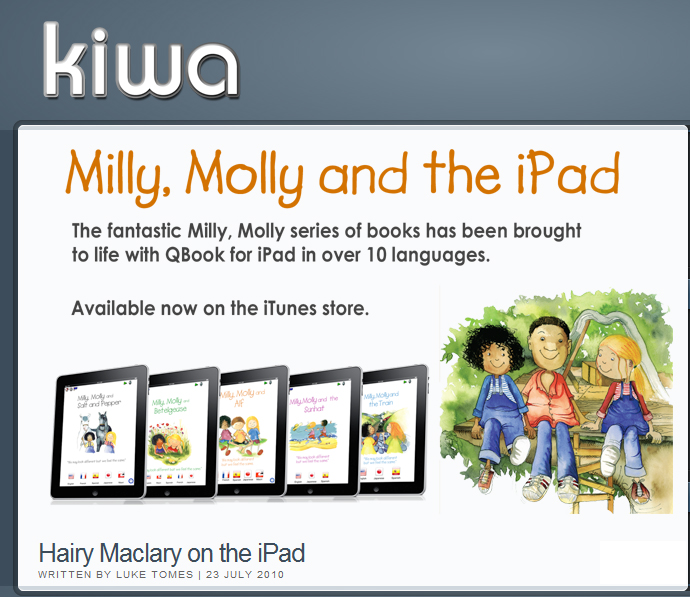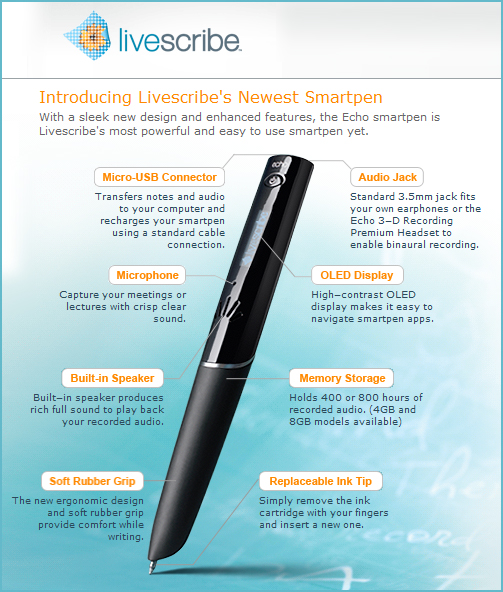
— My thanks to Mr. Michael Haan, Technology Integration Specialist/Purchasing within
Calvin College’s IT Department, for this resource

.


.
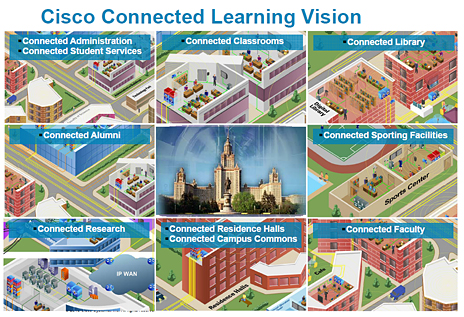
.
.
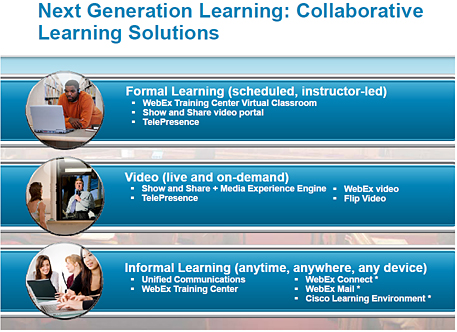
.
. .
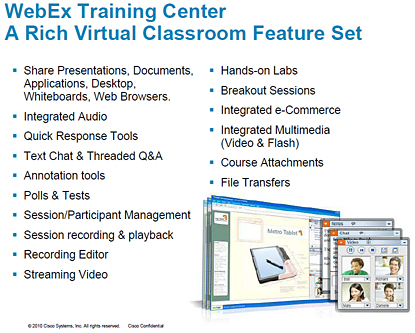
Daniel Christian: Creating Slideshows – August2010
With my special thanks to Mr. Damon Zuidema, Mr. Bill Vriesema,
and Mr. Johnny Ansari for their contributions here.
Top 70 eLearning Articles – Hot Topics: iPad Adobe Captivate – July 2010 — from elearninglearning.com by Tony Karrer
The following are the top items based on social signals…
Quickstart guide for iMovie ’09 — from Storychasers.org by Wesley Fryer
From DSC:
Thanks Wes for putting this out there!
From DSC:
Two items I read this morning remind me of the need to be very flexible — as the world is full of change:
- RIP Google Wave
NEW YORK (CNNMoney.com) — Google’s attempt to reinvent e-mail has fizzled. The company said Wednesday it is pulling the plug on Google Wave, a collaborative tool that drew intense attention when it debuted last year. “Wave has not seen the user adoption we would have liked,” Urs Hölzle, Google’s senior vice president of operations, wrote in a post on the company’s blog. “We don’t plan to continue developing Wave as a standalone product, but we will maintain the site at least through the end of the year and extend the technology for use in other Google projects.” - Apple will be phasing out the ALI website
On September 3, 2010, Apple will be phasing out the ALI website and folks are encouraged to visit iTunes U instead. Apple believes that iTunes U is the best way to meet the growing needs of teachers and students demanding flexible access to world-class curriculum and learning resources.
From DSC:
These two items are in addition to the fairly recent announcement that NING-based groups would be charged for services that were previously free of charge.
As an instructional technologist, these waters are rough. Picking the right vendor and the right product is not easy — but one develops some principles over time. As an example: For best adoption, follow the “KISS principle.” Google Wave floundered because it was too complex — it was understood by the programmers at Google who were joined by a very limited # of folks after that…but the product was not comprehended by the masses.
Furthermore, this move by Google to pull the plug here is troubling for various types of institutions — whether they be in higher ed, K-12, or in the corporate world — as we look towards cloud-based applications to help serve the needs of our organizations. If those apps have a life span of 12-18 months…that’s not going to cut it. We need greater stability than that.
But we may not get it…so how do we respond? We need to be able to change — quickly; and we don’t implement a product without having an escape plan/backup plan in place.
I wonder…will organizations take more of a “wait and see” approach before implementing cloud-based apps? Perhaps.
Further info on iTunes U:
There are over 800 universities with active iTunes U sites. Nearly half of these institutions — including Stanford, Yale, MIT, Oxford, and UC Berkeley — distribute their content publicly on the iTunes Store. In addition, cultural and education institutions such as the Library of Congress, public broadcasting, and state departments of education also contribute to this growing educational content repository which now includes over 325,000 free lectures, audiobooks, lesson plans, and more. iTunes U is the ideal resource for educators who want to gain insight into curriculum being taught world wide, get access to primary resources, and find inspiration for enhancing teaching and learning with technology.
Using backchannels in your classroom — from Free Technology for Teachers by Richard Byrne
Also see:
Backchanneling in 1st Grade? — from Dr. Z. Reflects
Kiwa Media Group is an award winning media company developing iPhone/iPod Touch & iPad Apps, digital content for books, producing film & television programs & digital content for the mobile music industry. Kiwa Media also provides software solutions for ADR and Language Dubbing across the globe. The company is led by President, Rhonda Kite.
Kiwa Media Group brands include QBook, SingQ, VoiceQ & Kiwa TV & Film Production. Kiwa is a registered Mac OS and iPhone developer.
Example product –> QBook – Bringing your stories to life
QBook™ is an interactive read-along digital colour picture book format designed by Kiwa Media for young children. QBook is an eBook, iPhone and iPad app that combines a narrators voice with original picture illustrations and touchable text that is synchronised to highlight and sound when words are touched.
From DSC:
Let’s picture that you are a 3-4 year old…and your parents get you one of these iPads. You begin to learn to read like this using an app like QBook. You grow up knowing this type of technology exists and you use gadgets like this all the time. They keep you engaged…they give you control of the content, pacing, etc.
Now fast forward to college. You’ll quickly see why I preach the dangers of the status quo.
Apple Quicktime
http://www.apple.com/quicktime/download/
VLC Media Player
http://www.videolan.org/vlc/
K-Lite Codec Pack (to play darn near every video codec in the world)
http://www.free-codecs.com/download/k_lite_codec_pack.htm
Windows Media Player
http://www.microsoft.com/windows/windowsmedia/download/AllDownloads.aspx?displang=en&qstechnology=
Real Media Player
http://www.real.com/realplayer
Organize e-books in iTunes — from Macworld.com by Kirk McElhearn
With the arrival of iOS 4, the iPad, and iTunes 9.2, iTunes can now manage e-books for syncing to Apple’s iBooks app. iTunes accepts two types of book files: those in ePub format, and PDF files. Organizing e-books in iTunes can be a bit baffling, however. Here’s a look at how you can keep your e-book library spic and span.









